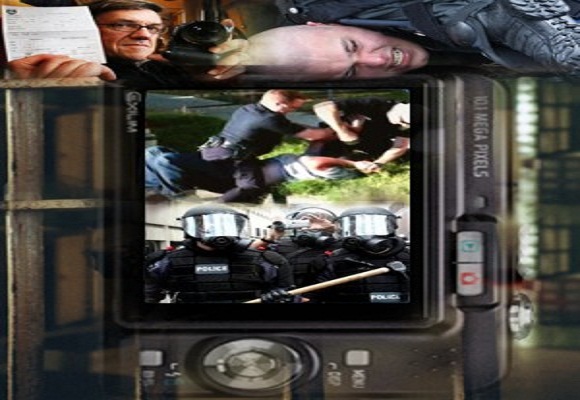
Homeland Security and FBI Release Document Once Again Labeling Photographers as Potential Terrorists 26
Carlos Miller
Department of Homeland Security and the FBI.
The “Roll Call Release,” dated November 13, 2012 and titled “Suspicious Activity Reporting: Photography,” gives a vague reference to a single example where a terrorist may have used cameras to plan attacks.

“In late 2000 and early 2001, convicted al-Qaida operative Dhiren Barot took extensive video footage and numerous photographs of sites in downtown New York City and Washington DC in preparation for planned attacks.”
But then it goes on to list three other examples where people were detained for using cameras in airports, parking garages and shopping malls – which the report describes as “consistent with pre-operational activity and attack planning” – that turned out to have nothing to do with terrorist activity.
But the feds still refer to these detainments as a sign of success because they served for “awareness and training purposes” – as if they need any more training to harass innocent photographers.
And although Barot was convicted of planning attacks, authorities could not connect a video he recorded of the World Trade Center to the actual 9/11 terrorist attacks.
Barot undertook reconnaissance missions in the UK and US in 2000 and 2001, during which he filmed buildings including the International Monetary Fund and World Bank headquarters in Washington DC and the Stock Exchange and Citigroup buildings in New York.
Although there was no evidence that he had foreknowledge of the September 11 attacks on the US, one clip, played in court, showed the World Trade Centre with someone imitating the noise of an explosion in the background.
Barot was also known to visit public libraries to plan possible attacks, so perhaps visiting your local library will soon be regarded as suspicious.
Labeling photographers as potential terrorists has been rampant since the 9/11 terrorist attacks, but in 2010, after forcing a man to the ground for video recording a federal courthouse in New York City, the Department of Homeland Security agreed to a settlement, acknowledging that photographing federal buildings is not a crime.
But that still didn’t stop the feds for spreading the message that photographers should be deemed suspicious, including funding municipalities to produce propaganda videos.
Two months ago, it began encouraging citizens to photograph other citizens who take suspicious photographs in order to report them to Homeland Security.
In October, the FBI visited a Houston man at home after he had been seen taking photos near a refinery. He had only been taking pictures of a brewing storm for the National Weather Service.
In 2008, security expert Bruce Schneier wrote his famous “War on Photography” article, in which he stated the following:
Since 9/11, there has been an increasing war on photography. Photographers have been harassed, questioned, detained, arrested or worse, and declared to be unwelcome. We’ve been repeatedly told to watch out for photographers, especially suspicious ones. Clearly any terrorist is going to first photograph his target, so vigilance is required.
Except that it’s nonsense. The 9/11 terrorists didn’t photograph anything. Nor did the London transport bombers, the Madrid subway bombers, or the liquid bombers arrested in 2006. Timothy McVeigh didn’t photograph the Oklahoma City Federal Building. The Unabomber didn’t photograph anything; neither did shoe-bomber Richard Reid. Photographs aren’t being found amongst the papers of Palestinian suicide bombers. The IRA wasn’t known for its photography. Even those manufactured terrorist plots that the US government likes to talk about — the Ft. Dix terrorists, the JFK airport bombers, the Miami 7, the Lackawanna 6 — no photography.
Thanks to Massachusetts Private Eye for the heads up on this story, who found it on an interesting site called Public Intelligence that collects these types of documents, including one from February 2011 where a man was detained in Seattle for “suspicious iPhone photography.”
This article first appeared at photographyisnotacrime
